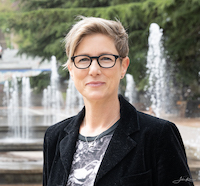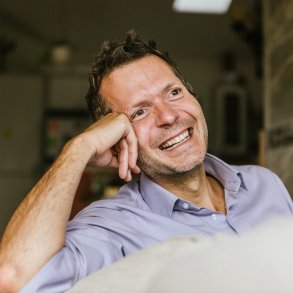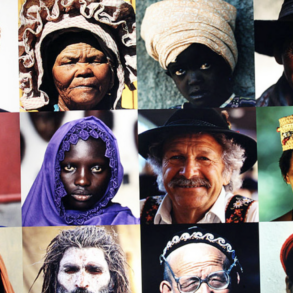By Jennifer Rice for Enlivening Edge Magazine
Jen Rice shares some of the key insights from hosting an Open Space exercise at the Teal Around the World virtual conference.
In July, I attended the worthwhile Teal Around the World virtual conference on how we can take a more human and biological approach to transforming organizations.
If you’re not familiar with Teal, it’s a philosophy of change anchored on biological systems—using principles of self-organization, wholeness and purpose—instead of the Orange mechanistic worldview that’s prevalent today.
Coming from a more traditional customer experience (CX) and digital transformation world, it was refreshing for me to *actually* focus more on the human side of the equation which, at the end of the day, is all that really matters.
And yet I think both sides—the Teal and the Orange—complement one another, especially in very large organizations. This isn’t a battle of which is better (either/or) but rather how Teal can include yet transcend (both/and.)
Why are both important? The benefits that emerged from Orange include structure, logic and efficiencies: how Analyzing Mind (aka the left hemisphere of our brains) manifests the world in its own image. Teal is manifested by Connecting Mind—our ability to see the gestalt, connections, and emergent behavior—as well as by our Feeling and Sensing Minds. They’re all integral parts of who we are, and they all bring something to the table if used wisely.
After decades of over-rotating in favor of Orange/Analyzing, it’s time to go beyond—from fragmentation into wholeness—starting with ourselves. When we are whole and balanced in our inner worlds, (what I call Whole Mind leadership), we can create whole and balanced organizations where everyone has a role: the engineers, the guardians, the artists, the nurturers, the alchemists and the visionaries.
The essential role of emotion
At the conference, I hosted an Open Space where 8 participants brainstormed about what it meant to bring our whole selves to work. We collectively documented a number of essential ideas in only 15 minutes.
As I sit with the resulting map, a new pattern emerges with two main themes:
1) how we want to feel, and
2) how an organization nurtures those emotions.
“How we want to feel” is consistent with my 30 years of research into customer (i.e. human) behavior. After countless segmentation studies, third-party research, and working for a global organization that deeply investigates this topic, the evidence is clear: emotion, not logic, motivates our decisions and behavior.
Over the years I’ve synthesized these motivators down to 12 core human needs and their associated emotions (how we feel when these needs are met)… and in studying high-performing organizations, they all tap into one or several of these needs as a unifying sense of purpose that magnetizes the entire ecosystem.
What needs and emotions emerged from this group?
- Psychological safety and trust (I feel safe): Can I be vulnerable at work? Can I show up with all my flaws, show weakness, and say what needs to be said?
- Autonomy (I feel free): Am I free to be myself without the need to wear a mask? Can I expose different aspects of my identity? Can I simply be myself every day? In addition to individuality, autonomy shows up in other ways like choice and empowerment as articulated in Self Determination Theory or SDT.
- Recognition (I feel valued): Am I valued and truly seen for what I bring to this organization?
- Belonging (I feel connected, also in SDT): Can I connect with others and find my tribe? Is collaboration and co-creation encouraged? This can also relate to feeling part of something bigger, which leads me to…
- Purpose: Does my work have meaning? Several different emotions can result from this, including meaningful, inspired, hopeful, proud. How do you feel when you have a strong sense of purpose?
- Growth: Am I growing as a human being… growing spiritually as well as developmentally and intellectually? Emotions might include accomplished, thriving, proud, curious… how do you feel when you know you’re growing?
How organizations can nurture these emotions
The second theme is about how an organization can enable and nurture how we all want to feel. This group focused on:
- Values and culture characterized by authenticity, trust, transparency, tolerance/diversity, strength-focused, courage and customer/human-centricity.
- A structure that that celebrates life, modeled after the natural world; I’d add more agile processes to this bucket.
- Leaders and role models who are transparent and servant-based, and who are allowed to make mistakes (ie. admit their own humanity).
- Metrics aligned to purpose, and defining “success” in terms of impact.
- Our own inner worlds: developing our whole minds, honoring intuition, truly listening to ourselves so we can hear others, building emotional awareness, and tapping somatic wisdom. When we bring our whole selves to work, we can create the whole organizations that we all yearn for. As within, so without.
Anything else you’d add? Let’s keep this conversation going.
 Jen Rice is a transformation coach who helps “rebels with a cause” create more freedom and impact in their lives and work. Her background is three decades in customer-led transformation strategy for organizations. After a nomadic sabbatical with just a camera and a carry-on, she’s now focused on the deeply personal side of the equation. https://jenrice.co or [email protected].
Jen Rice is a transformation coach who helps “rebels with a cause” create more freedom and impact in their lives and work. Her background is three decades in customer-led transformation strategy for organizations. After a nomadic sabbatical with just a camera and a carry-on, she’s now focused on the deeply personal side of the equation. https://jenrice.co or [email protected].
https://www.linkedin.com/in/jenniferrice415/
Featured




